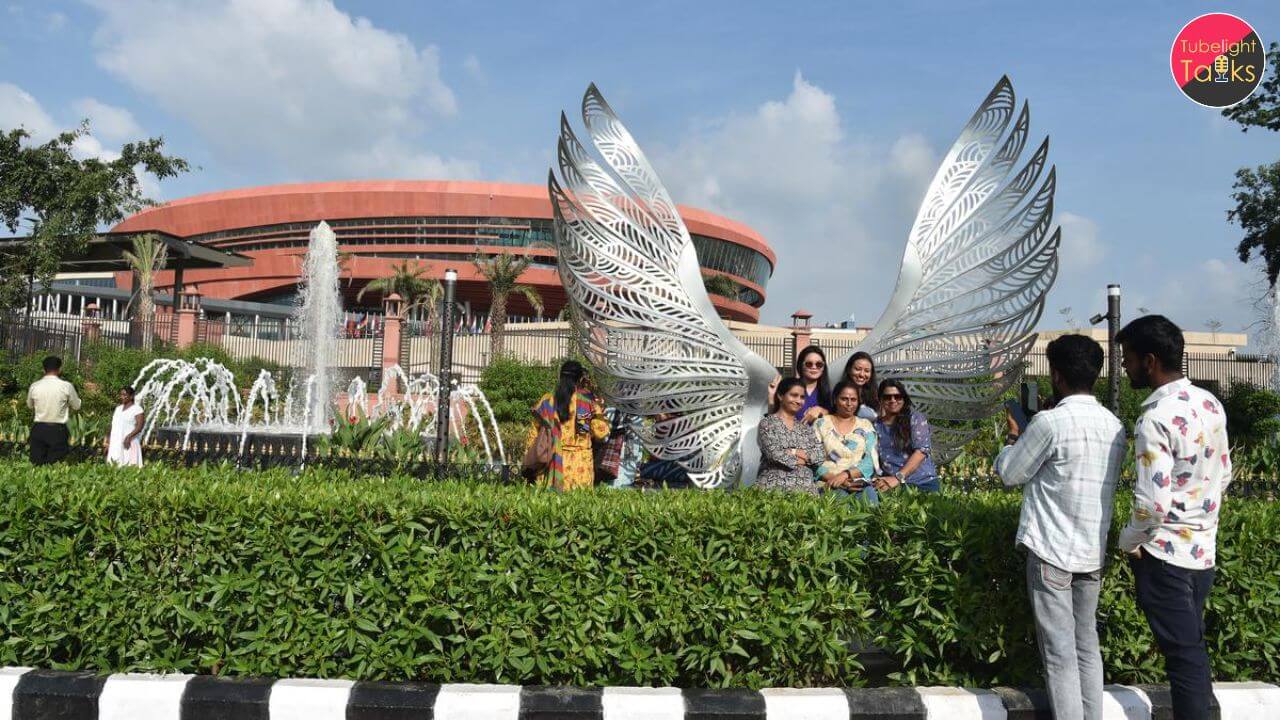In 2024, India has the distinct honor of hosting the prestigious UNESCO World Heritage Committee session. This significant event brings together representatives from around the globe to discuss, evaluate, and protect the world’s cultural and natural heritage. India’s rich and diverse cultural tapestry makes it a fitting venue for such a gathering. In this blog, we will delve into the history and significance of the UNESCO World Heritage Committee, its role, and what it means for India to host the 2024 session.
Key highlights
- India will host the UNESCO World Heritage Committee session in 2024, showcasing its rich cultural and natural heritage.
- Established in 1945, UNESCO aims to foster international cooperation in science, art, and culture to promote global peace.
- The World Heritage Convention, created in 1972, helps protect and preserve heritage sites threatened by conflict and destruction.
- UNESCO’s committee evaluates and inscribes sites on the World Heritage List and allocates funds for their conservation.
- The session will boost India’s economy by attracting delegates, experts, and tourists, promoting local job creation and tourism.
- Hosting the event highlights India’s role as a global custodian of heritage and its commitment to preserving its numerous UNESCO sites.
- The session provides an opportunity for India to exchange knowledge and improve its heritage conservation practices through international collaboration.
- India’s UNESCO World Heritage Sites include iconic cultural landmarks like the Taj Mahal and natural wonders such as the Western Ghats.
- The event underscores the importance of both preserving heritage and acknowledging the transient nature of worldly achievements.
Establishment of UNESCO
The United Nations Education Scientific and Cultural Organization came into existence in 1945. Soon after the heart throbbing second world war there was a desperate need to bring in peace and harmony within and beyond nations universally.
UNESCO’s prime aspiration
UNESCO’s prime aspiration was to secure international cooperation in the sector of science art and culture, more importantly, achieve peace and oneness universally. Established by representatives from 37 countries, UNESCO aims to protect heritage sites from the threats of armed conflict, war, and destruction. These sites, which embody the rich culture of human civilization, are safeguarded under the World Heritage Convention, established in 1972. To oversee this mission, a committee of 21 members was formed.
The Role of UNESCO
The committee is responsible for implementing the World Heritage Convention. It allocates financial assistance from the world heritage fund and finalizes on whether a site is inscribed on the world heritage list and later on added them under cultural,natural or the mixed sites accordingly.
Responsiblities of UNESCO
The World Heritage Committee’s primary responsibilities encompass several crucial tasks. First, the committee evaluates and decides which sites will be added to the World Heritage List based on their universal value, integrity, and authenticity. It also monitors the state of conservation of inscribed properties, taking necessary measures to address any threats to their integrity. Additionally, the committee allocates financial assistance from the World Heritage Fund to support the preservation of heritage sites, particularly in developing countries. Furthermore, the committee develops policies and strategies to ensure the effective implementation of the World Heritage Convention.
Advantages of heritage sites inscribed in UNESCO World Heritage Sites
Heritage sites inscribed as UNESCO World Heritage Sites gain global attention, promoting their country of origin and facilitating the allocation of funds from both governmental and non-governmental bodies. These monumental sites are safeguarded in the best possible manner to preserve their original form. Additionally, globalization helps these sites attain worldwide fame.
The World Heritage Sites are categorized under three categories.
- Cultural Sites: Depicts the importance of historical cultural significance by providing extensive knowledge on it, to the present and future generations.
- Natural Sites:They are prominent in preserving and safeguarding the Natural Sites inscribed on UNESCO.
- Mixed sites : These sites are important for human Civilization in understanding and learning the cultural significance as well as important for nature preservation the sites under UNESCO catches Global attention and the protection.
Khangchendzonga National Park of Sikkim was declared a UNESCO World Heritage site in the mixed World Heritage category.
List of world Heritage Sites UNESCO in India
Cultural Sites
1. Taj Mahal Uttar Pradesh 1983
2. Agra Fort Uttar Pradesh 1983
3. Ajanta Caves Maharashtra1983
4. Ellora Caves Maharashtra 1983
5.Sun temple Konark Odisha 1984
6. Group of monuments at Mahabalipuram 1984
7. Fatehpur Sikri Uttar Pradesh 1986
8. group of monuments at Hampi Karnataka 1986
9. Khajuraho group of monuments Madhya Pradesh 1986
10. Convents of Goa, Goa 1986
11. Elephant caves Maharashtra 1987
12. group of monuments at Pattadakal, Karnataka 1987
13. Great living Chola temples, Tamilnadu 1987, 2004
14. Buddhist monuments at Sanchi Madhya Pradesh 1989
15. Humayun’s Tomb Delhi 1993
16. Qutub Minar and its monuments-Delhi 1993
17. mountain Railways of India Himachal Pradesh, Darjeeling, West Bengal, kalka,Tamilnadu, Nilgiri 1999,2005,2008
18. Mahabodhi temple complex at Bodh Gaya Bihar 2002
19. Rock Shelters of Bhimbetka Madhya Pradesh 2003.
20. Chhatrapati Shivaji Terminus Maharashtra 2004
21. champaner pavagadh archaeological Park Gujarat 2004
22. Red Fort Complex Delhi 2007
23. The Jantar Mantar Jaipur Rajasthan 2010
24. Hill Forts of Rajasthan- Chittorgarh, Kumbhalgarh,Jaisalmer,ranthambore, amber, gagron, Rajasthan 2013
25. Rani ki vav patan, Gujarat 2014
26. The architectural work of le corbusier modern movement Chandigarh 2016
27. Archaeological site of Nalanda Mahavihara at Nalanda Bihar 2016
28. Historic city of Ahmedabad Gujarat 2017
29. Victorian Gothic and art deco and symbols of Mumbai Maharashtra 2018
30. Jaipur city Rajasthan 2019
31. Kakatiya Rudreshwara Temple Telangana 2021
32. Dholavira Harappan city Gujarat 2021
33. Santiniketan,West Bengal,2023
34. Sacred Ensembles of the Hoysala, Karnataka,2023
Natural Sites
35. Kaziranga National Park,Assam ,1985
36. Manas Wildlife Sanctuary,Assam,1985
37. keoladeo National Park, Rajasthan,1985
38. Sundarbans National Park,West Bengal,1987
39. Nanda Devi and Valley of Flowers National Parks,Utrarakhand,1988,
2005
40. Western Ghats, Karnataka,Kerala, Maharashtra,Tamil And 2012
41. Great Himalayan National Park Conservation Area,Himachal Pradesh,2014
Mixed Sites
42. Khangchendzonga National Park,Sikkim,2016
The Significance of Hosting the 2024 Session in India
Cultural Heritage of India
India is a land of immense cultural heritage, boasting numerous UNESCO World Heritage Sites, including the Taj Mahal, Qutub Minar, Jaipur City, and the Sundarbans. Hosting the 2024 session underscores India’s commitment to preserving its cultural and natural heritage and highlights its role as a global custodian of heritage.
Economic and Tourism Impact
Hosting the UNESCO World Heritage Committee session is expected to have a positive economic impact on India. The influx of delegates, experts, and tourists will boost local economies, create job opportunities, and promote tourism. It also provides a platform for showcasing India’s rich heritage and attracting international attention to lesser-known sites.
■ Also Read: India’s Export Rises: A Look at the Surging Growth
Enhancing Heritage Conservation Efforts
The 2024 session will bring together global experts in heritage conservation, providing an opportunity for India to learn from best practices, share its experiences, and strengthen its heritage conservation efforts. Collaborative initiatives and international partnerships forged during the session can lead to enhanced preservation strategies and sustainable management of heritage sites.
From Temporal Heritage to Eternal Truth
The UNESCO World Heritage Committee session in India in 2024 is a momentous occasion that underscores India’s commitment to preserving its cultural and natural heritage. It provides a platform for global collaboration, knowledge exchange, and the celebration of humanity’s shared heritage. Since UNESCO was established to protect heritage sites from the threats of armed conflict, war, and destruction, it is crucial to acknowledge the transient nature of this world. Natural calamities, such as earthquakes, can obliterate everything in seconds, and conflicts between nations can lead to the devastation of these invaluable sites. Recognizing that everything in this world is temporary, including our own bodies, we must seek a more enduring solution.
True permanence can be found through spirituality. By worshiping the Almighty God as mentioned in our holy scriptures, we can achieve an immortal place and body that cannot be destroyed. For a deeper understanding of this spiritual path, one can read the book “Gyan Ganga,” which offers insights into attaining an eternal and indestructible existence.In conclusion, while preserving our cultural and natural heritage is of paramount importance, embracing spirituality provides a path to true immortality and permanence, transcending the temporal nature of our world.
FAQ on UNESCO’s 46th World Heritage Committee hosted in 2024.
Q: What is the full form of UNESCO?
The United Nations education scientific and cultural organization.
Q: Where was the 45th UNESCO’s World Heritage Committee hosted?
45th UNESCO’s World Heritage Committee was hosted in Riyadh Saudi Arabia.
Q: When was the Taj Mahal listed under the World Heritage site?
Taj Mahal was listed on the World Heritage site in 1983
Q: Which is India’s only mixed site listed in the World Heritage site ?
Khangchendzonga National Park of Sikkim was declared a UNESCO world Heritage Site in the mixed site category.










